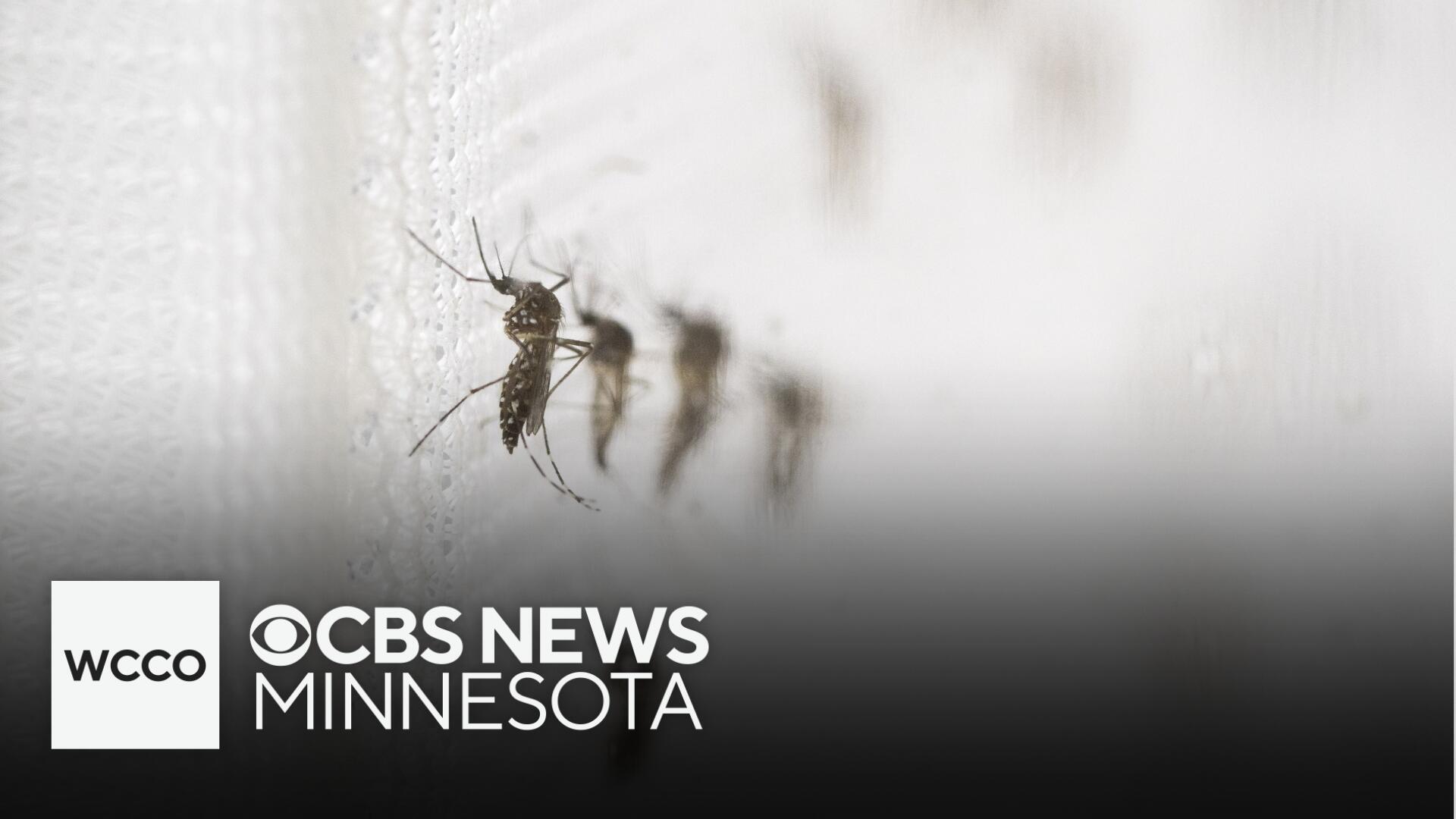Health leaders are urging Minnesotans to get proactive in preventing the West Nile virus and other mosquito-borne illnesses as summer winds down.
The Minnesota Department of Health said there are 20 reported cases of West Nile so far this year in the state, two of which were fatal.
The department said the cases are spread across the state, with the highest risk areas including “agricultural regions of western and central Minnesota.”
Nearly all infected with the disease experience, at the most, mild flu-like symptoms, department officials said. But less than 1% of those infected risk developing serious brain inflammation, leading to encephalitis or meningitis.
Elizabeth Schiffman, supervisor of the department’s vectorborne diseases unit, told WCCO last month elderly patients and those with weakened immune systems are at greatest risk for severe disease, followed by people who work outside or participate in outdoor activities.
Schiffman said cases peak at the end of summer into early fall, when there is a larger mosquito population and they’ve had more time to circulate viruses.
The threat typically diminishes by the end of the month or early October. The first hard frost will get rid of the mosquitoes, too.
“I don’t think it’s something where want people to panic about of course, but definitely knowing that the risk is there and this time of year is definitely the highest risk time,” Schiffman told WCCO in July.
The department shared the following tips for prevention:
- Use insect repellents that are registered by the Environmental Protection Agency and contain up to 30% DEET.
- Pre-treat clothing and gear with permethrin-based products.
- Wear loose-fitting, long-sleeved shirts and pants.
- Be extra cautious or avoid outdoor activities at dusk and dawn, the peak feeding time for many mosquitoes, particularly from July through September.
- Keep mosquitoes out of your home by maintaining screens on windows and doors.
NOTE: The original airdate of the video attached to this article is July 25, 2025.




:max_bytes(150000):strip_icc()/tal-10-cute-walking-shoes-tout-6ca39df94f7843b38e4297656fdeb1b9.jpg)
0 Comments